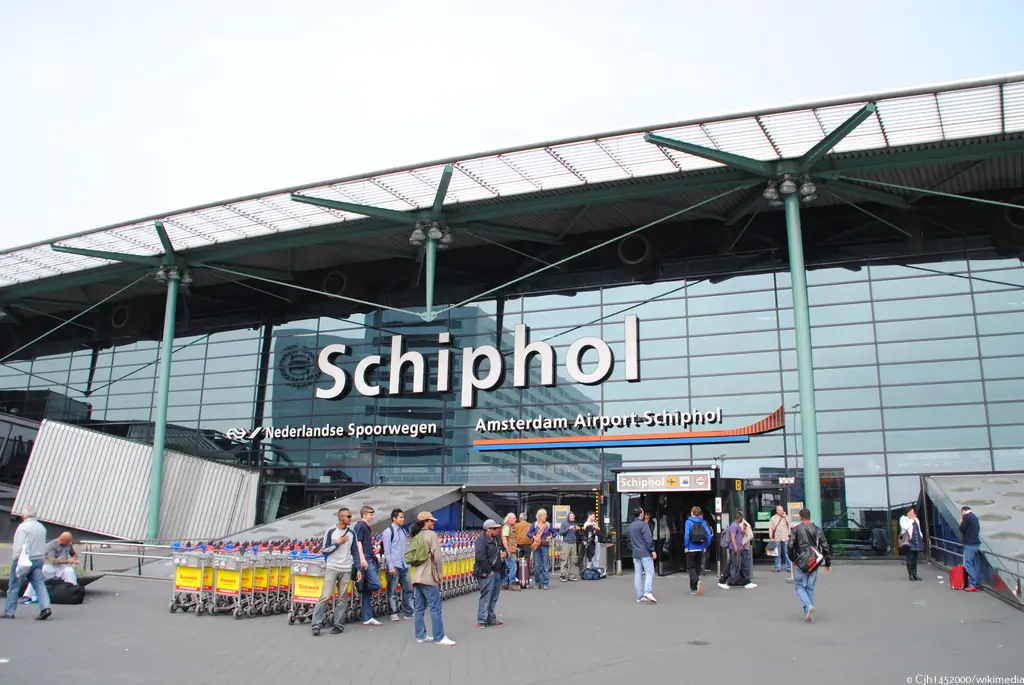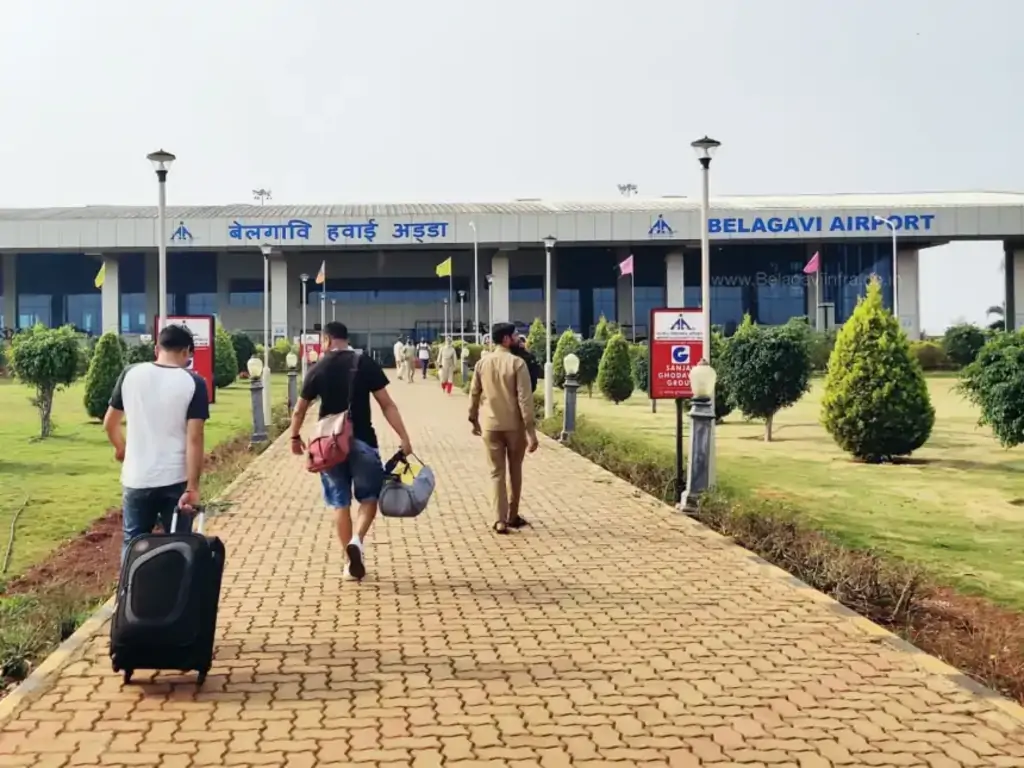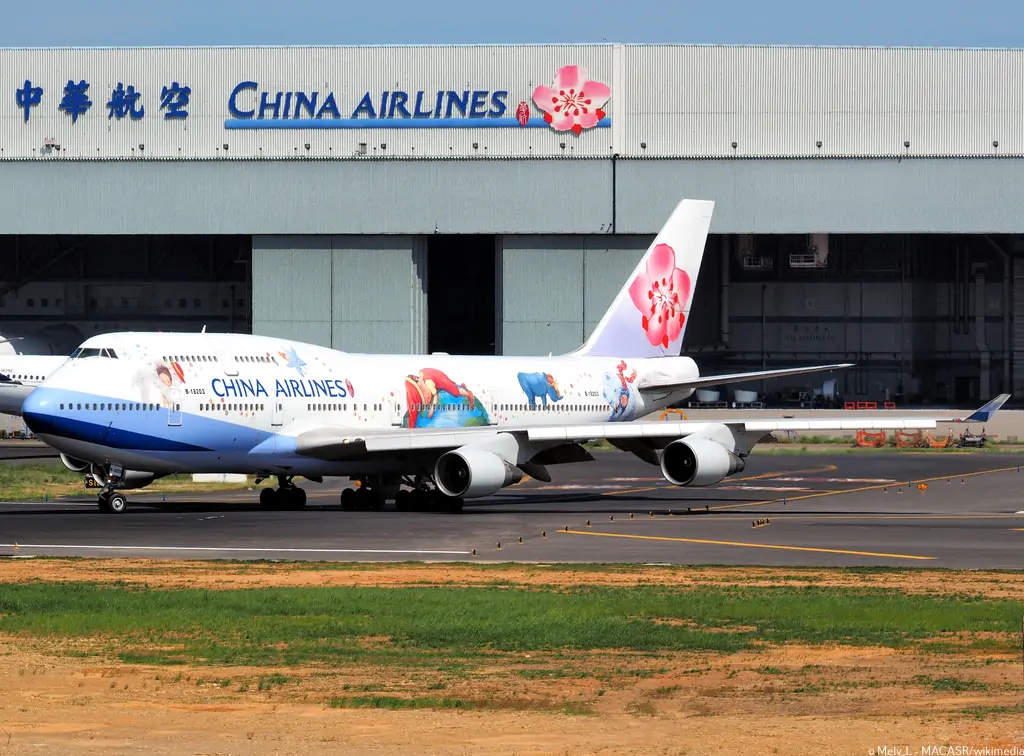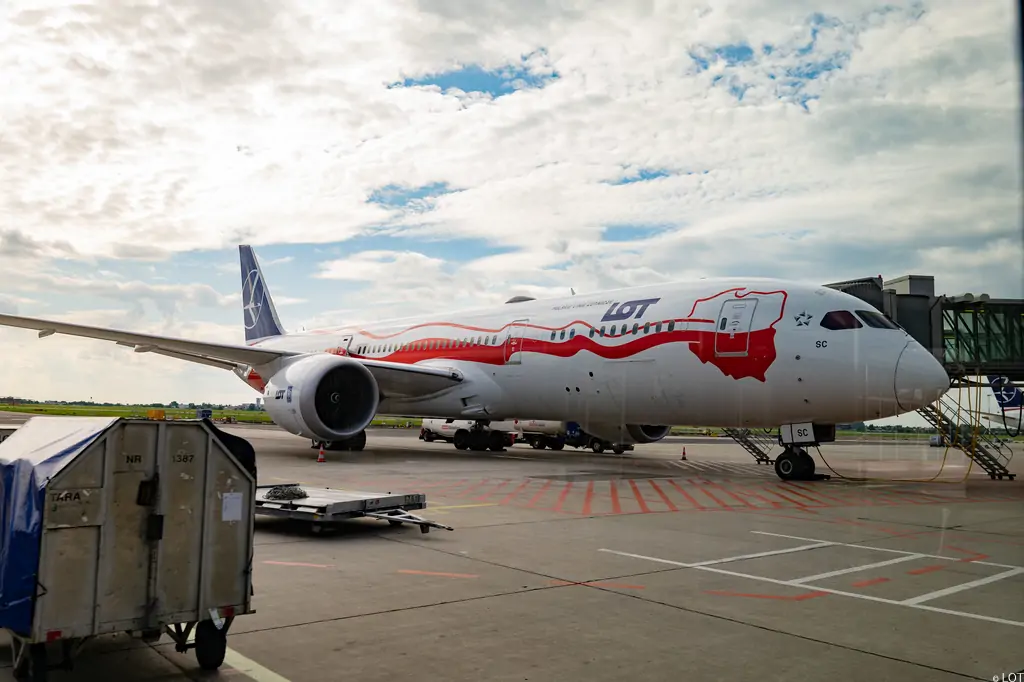The Airports Authority of India (AAI) has given administrative approval for the expansion of Belagavi Airport and floated a tender for the upgradation works, including the expansion of the passenger terminal building, apron Expansion, Runway, Aerobridges and other facilities at Belagavi Airport at the cost of INR 229.57 Crore.
AAI has invited Architectural Consultancy Services for the Construction of the new terminal buildings and miscellaneous works at Belagavi Airport with a completion period of 36 months on 28th June 2023. The tender includes the upgradation of both Belagavi and Hubballi airports and the estimated cost of the project is INR 457.72 Crore (Hubballi - INR 228.15 Cr.+ Belagavi - INR 229.57 Cr.) which is inclusive of all taxes but excluding GST.
The new Terminal building at Belagavi Airport will be 20,000 sum (ground+first floor) (16000 sq.m new terminal + 3600 existing terminal ) after enlargement, with all modern facilities and three aero-bridges. It could handle 1,400 peak-hour passengers (700 arrivals and 700 departures) after enlargement. Following the completion of the drawings and structural specifications, the project will be put out to bid. The expansion work is likely to begin as early as January 2024 and be completed in 24-36 months.
The existing Belgaum Airport Terminal was inaugurated on 14 September 2017. The terminal building is spread over 3,600 square metres and can accommodate over 300 passengers. It has two baggage conveyor belts and six check-in counters. It has an apron for parking three Airbus A320 and Boeing 737 aircraft. The old apron has two parking stands designed for the ATR 72 and similar aircraft. There are also two additional aprons, one on the north side of the runway that serves as an isolation bay and one on the south side. These aprons are each connected by single taxiways to runway 08/26, which measures 2,300 by 45 metres (7,546 ft × 148 ft).
Once the structural plan has been submitted and approved, the actual construction work for the terminal is scheduled to commence in the first quarter of 2024. The entire project is anticipated to take approximately 36 months to reach completion. With a completion period of 36 months, we anticipate that the new terminal buildings and associated works will be ready to serve the growing needs of passengers and airlines by Jan 2027.
Surge in Passenger Traffic
Passenger traffic in the Belagavi Airport at Sambra increased by nearly 25% in May this year, according to statistics released by the Airports Authority of India. As per the latest figures, the airport saw a 23.15% increase in passenger traffic in April this year. The number of air passengers who passed through Sambra in May alone was 23,304, against 18,922 in April.
Around 4,300 additional passengers used the airport in May. As many as 538 aircraft movements were documented at the airport. Around one tonne of cargo, movement was registered. The movement of passengers has been steadily rising this year. It started with 16,637 passengers and 387 aircraft movements in January. It has reached 23,304 passengers and 538 aircraft movements in May, AAI said.
Belgaum Airport also known as Belagavi Airport, is a domestic airport serving Belgaum, Karnataka. The current integrated terminal building was inaugurated by the then Minister of Civil Aviation, Ashok Gajapathi Raju on 14 September 2017. Near the airport, there is an Indian Air Force station, where recruits receive basic training. The airport is established by Royal Air Force in 1942. Indian Airlines commenced operations in 1947. From the year 1989 to 2011, various private Airlines operated at Belagavi Airport.
Read next
India is set to see a major uplift in its civil aviation infrastructure, with 230-240 airports, heliports, and water aerodromes planned for completion by 2030, up from the current 148, according to the country’s Minister of Civil Aviation, Jyotiraditya Scindia. The plans aim to accommodate a surge in demand, as the airline industry experienced passenger growth from 60 million in 2013-14 to 145 million in recent years.
By March 2023, an additional 74 airports, helicopters, and water aerodromes have been successfully established, bringing the total count to 148. The minister's objective is to reach a remarkable 230 airports by 2024-25. Notably, Tirupati, Vijayawada, Kushinagar, and Mopa Airports have recently been declared international airports, contributing to a total of 30 international airports across India.
Efforts are underway to enhance the capacity of metro airports, with plans to increase overall capacity from the current 221 million passengers per annum (MPPA) to over 456 MPPA in the next decade. Several expansion projects are already in progress or completed at airports such as DIAL, Bengaluru, Hyderabad, and Chennai. Additionally, the construction of Greenfield Airports in Noida (Jewar) and Navi Mumbai will significantly boost capacity expansion in Delhi and Mumbai, respectively. The northeastern states have witnessed a remarkable increase in airport infrastructure, notable additions include airports in Hollongi, Ziro, Pasighat, Dibrugarh, Tezpur, and Pakyong.
The National Infrastructure Pipeline (NIP) plays a crucial role in funding these developments, projecting a capital expenditure (CAPEX) of over INR 98,000 crore from FY2019-20 to FY2024-25. The AAI is to contribute INR 25,000 crore towards India's aviation infrastructure expansion, while the remaining investment will be borne by airport developers under the public-private partnership (PPP) model. The AAI has already made a capital expenditure of over INR 20,000 crore in the past nine years to strengthen the civil aviation sector.
India's ambitious plan to establish 200-220 airports, heliports, and water aerodromes in the coming years demonstrates the country's commitment to expanding its aviation infrastructure. This development will enhance domestic and international connectivity, boost economic growth, and provide improved travel options for the growing number of air passengers.
Surge in Air Traffic
The non-peak passenger numbers are also demonstrating a positive trend. A single-day record was broken this year with 460,000 passengers, even surpassing the pre-Covid peak of 420,000 passengers per day. Correspondingly, the size of the aircraft fleet has expanded from just under 400 in 2014 to approximately 700 presently, marking a 75% increase over nine years. These changes illustrate the democratisation of aviation services in India, enabling more people to travel by air. Notably, the future will see an anticipated fleet size of 1,200-1,400 aircraft by 2030 and a three-fold increase in annual passenger traffic to nearly 420 million.
Scindia dismissed concerns of a duopoly in the industry, mentioning the rise of the new airline Akasa Air and regional airlines such as Star Air, FlyBig, and IndiaOne Air. He underscored that competition is dynamic and dependent on the service quality of different carriers. The minister recognised the high airfare issue and attributed it to unprecedented demand and grounding of GoAir’s fleet. He assured that following a meeting with airlines, fares have now decreased by 25-30% on average and up to 65-70% in certain cases.
Regarding the growth of the air cargo industry, Scindia highlighted a rise from 2.27 million metric tonnes in 2013-14 to 3.11 million metric tonnes in 2019-20. This industry is expected to grow 18-20% over the next four to five years. Scindia expressed ambitions for India to become a global drone hub by 2030 when asked about the drone industry. A drone policy implemented in 2021, incentives through the Production Linked Incentive scheme, and increased usage of drones by government ministries are factors anticipated to contribute towards a Rs 5,000-crore industry that creates five to ten lakh jobs by 2023.
As for the number of aircraft, there were about 400 aircraft in 2013 and in 2021-22, the number rose to 700. "We are going to add 15% capacity or 100 to 110 aircraft per year. India is looking at close to 1,200 aircraft by 2027," Scindia said and emphasised there is growth in the market, fleet and airports.
The minister further went on to say that in 2013-14, there were only 74 airports and in the last 8 years, that number has gone up to The intention is to go up to 220 airports by 2030. "That is the phenomenal growth that you are going to see on infrastructure as far as airports are concerned, in terms of service capabilities, airlines and in terms of passengers...," Scindia said.
Read next
Virgin Australia is all set to redefine the travel experience with the introduction of the Boeing 737-8. This state-of-the-art aircraft not only promises enhanced comfort and efficiency but also marks the debut of Virgin Australia's highly anticipated new Business Class and Economy cabin décor. With a focus on customer satisfaction, the airline has invested $110 million in refreshing the interiors of its Boeing fleet, offering travelers an upgraded flying experience like never before.
Business Class: Luxury and Elegance
Virgin Australia's new Business Class is designed to provide passengers with the utmost comfort and luxury. With its stylish and contemporary interior, this cabin offers a sophisticated ambiance for travelers. The seats are designed with ergonomics in mind, ensuring optimal comfort throughout the journey. Passengers can expect a spacious and private experience, allowing them to relax or work with ease. The airline's commitment to customer satisfaction is evident in the attention to detail and premium amenities provided in Business Class.
Economy Class: Comfort and Convenience
For Economy Class passengers, Virgin Australia has also gone the extra mile to ensure a comfortable and convenient journey. The new cabin décor creates a refreshing and vibrant atmosphere, making the overall travel experience more enjoyable. The seats are ergonomically designed, providing ample legroom and support. Passengers can sit back and relax, knowing that their comfort is a top priority for Virgin Australia.
Highlight Features for the 737-8
- All Business Class and Economy seats have in-seat power.
- Larger overhead lockers with up to 50% more carry-on luggage space (individual guest carry-on luggage restrictions will not change).
- Larger Business Class chairs featuring extendable footrests, storage sections, tablet or device holders, and water bottle holders.
- A new Economy seat design featuring ribbed backing that improves comfort and ergonomics.
- All Economy seats have a dedicated tablet or device holder, making it convenient to access Virgin Australia in-flight entertainment, movies, and TV shows.
In-Seat Power and In-Flight Wi-Fi: Staying Connected
In today's digitally connected world, staying connected while flying is essential. Virgin Australia understands this and has equipped the Boeing 737-8 with in-seat power for all seats. Passengers can easily charge their devices, ensuring they stay powered throughout the flight. Additionally, the airline offers in-flight Wi-Fi, allowing passengers to access the internet, stay connected with their loved ones, or catch up on work. The combination of in-seat power and in-flight Wi-Fi adds convenience and productivity to the flying experience.
Cabin Refresh: Enhancing the Passenger Experience
To provide a consistent and enhanced travel experience, Virgin Australia plans to refresh the interior cabins of its remaining Boeing fleet. The $110 million investment aims to improve customer satisfaction and bring a new level of comfort to passengers. The cabin refresh will include updated seating, modern lighting, and refined interior design elements. Virgin Australia's commitment to creating a pleasant and memorable journey is evident in this investment.
- All Business Class and Economy seats will have in-seat power.
- New Business Class seats have been installed to match the new Boeing 737-8 aircraft.
- Installation of new or refreshed economy seats, including seats designed to match the new Boeing 737-8 aircraft.
- In-flight Wi-Fi and complementary in-flight entertainment (through a guest's own personal device) will be made available to the majority of the remaining fleet.
The adoption of a new cabin divider design between Business Class and Economy Class will also result in an altogether new seat layout. The new divider will allow for more floor space in the Economy cabin, as well as the later installation of six to twelve additional Economy seats. On all Boeing 737-800 aircraft, one Economy X row will be replaced with Economy seats as part of the refurbishment. Once the cabin refresh programme concludes, the unified in-flight offering will deliver additional seats for passengers and a consistent guest experience across all Virgin Australia Boeing 737 flights.
Conclusion
The arrival of the Boeing 737-8 and the introduction of Virgin Australia's new Business Class and refreshed Economy Class mark a significant milestone for the airline. The enhanced cabin décor, in-seat power, in-flight Wi-Fi, and planned cabin refresh demonstrate the airline's dedication to improving the overall flying experience. Whether you are traveling for business or leisure, Virgin Australia's commitment to customer satisfaction ensures a comfortable and enjoyable journey from start to finish.
With Inputs from Virgin Australia
Read next
Taiwan's aviation sector is experiencing a vibrant revival with the recent announcement by China Airlines, the country's flagship carrier, regarding its cabin crew recruiting campaign. This strategic move reflects the airline's anticipation of future expansion opportunities and aims to reinforce its commitment to providing exceptional service to passengers.
China Airlines' Cabin Crew Recruitment
China Airlines, renowned for its outstanding service and operational excellence, has launched a campaign to recruit 100 additional flight attendants. This recruitment drive is a significant milestone for the airline, as it is the first such initiative in three years. The campaign has generated tremendous interest and excitement among aspiring cabin crew members, as evidenced by the substantial number of applications received, which numbered 4000.
The Selection Process
This fresh batch of flight attendants will eventually be deployed across China Airlines' extensive worldwide network as the SkyTeam alliance member continually expands its aircraft to meet ever-increasing demand. But with thousands of applications, how will the airline select merely 100?
The Significance of the Recruitment Campaign
The overwhelming response to China Airlines' cabin crew recruitment campaign signifies the immense potential and resurgence of Taiwan's aviation sector. It demonstrates the public's enthusiasm and interest in pursuing careers within the aviation industry, particularly in customer service roles. This development also serves as a positive indicator of the country's economic growth and the increasing demand for air travel.
Implications for Taiwan's Aviation Sector
China Airlines' recruitment campaign holds promising implications for Taiwan's aviation sector as a whole. By expanding its cabin crew, the airline aims to enhance its services, cater to growing passenger demands, and maintain its competitive edge in the industry. This move has the potential to stimulate further job creation, attract investments, and contribute to the overall development of Taiwan's economy.
Ensuring Quality and Excellence in Cabin Crew
With the growing interest in the aviation sector, it becomes crucial for China Airlines and other airlines in Taiwan to maintain high standards of quality and excellence in their cabin crew. Rigorous selection processes, comprehensive training programs, and continuous professional development are essential to ensuring that flight attendants possess the necessary skills, knowledge, and aptitude to deliver exceptional customer experiences.
Future Expansion Prospects for China Airlines
China Airlines' cabin crew recruitment campaign suggests a positive outlook for the airline's future expansion. By strengthening its workforce, the airline is better positioned to seize growth opportunities and enhance its operations. As the demand for air travel increases, China Airlines can consider expanding its routes, adding new destinations, and investing in fleet modernization to remain competitive in the global aviation market.
Taiwan's Aviation Industry and Economic Growth
The growth of Taiwan's aviation industry plays a vital role in the country's overall economic development. A flourishing aviation sector attracts tourists, supports trade and business activities, and creates employment opportunities. By nurturing a robust aviation ecosystem, Taiwan can leverage its strategic location and establish itself as a regional aviation hub, contributing significantly to economic growth and prosperity.
Regulatory Challenges and Opportunities
As Taiwan's aviation sector flourishes, it is crucial to address regulatory challenges and seize opportunities for further development. Collaborative efforts between airlines, government authorities, and industry stakeholders can help streamline processes, enhance safety standards, and promote innovation. By fostering an enabling regulatory environment, Taiwan can position itself as an attractive destination for both airlines and passengers.
Training and Development for Cabin Crew
Investing in the training and development of cabin crew members is paramount for airlines to provide exceptional service. Continuous training programs enable flight attendants to refine their communication skills, cultural awareness, emergency response capabilities, and customer engagement techniques. By empowering cabin crew with comprehensive training, airlines can create memorable experiences for passengers, enhancing their overall journey.
The Importance of Customer Experience
In the aviation industry, delivering a superior customer experience is vital for sustaining growth and ensuring customer loyalty. Airlines must prioritize passenger satisfaction by providing personalized services, anticipating customer needs, and maintaining high standards of hospitality. By focusing on the customer experience, airlines can differentiate themselves in a competitive market and cultivate long-term relationships with travelers.
The Role of Technology in Aviation
Technology plays a transformative role in shaping the aviation industry. From online booking systems and self-check-in kiosks to in-flight entertainment and advanced aircraft maintenance, technological advancements enhance operational efficiency, improve passenger convenience, and optimize safety measures. By embracing innovative technologies, Taiwan's airlines can stay ahead of the curve and deliver enhanced experiences to travelers.
Sustainability and Environmental Considerations
As the aviation industry grows, addressing environmental concerns becomes increasingly important. Airlines must adopt sustainable practices, such as investing in fuel-efficient aircraft, implementing recycling programs, and reducing carbon emissions. By embracing sustainability, Taiwan's aviation sector can contribute to global efforts to combat climate change while minimizing its ecological footprint.
Collaboration and Partnerships
Collaboration and partnerships are crucial for the success and growth of Taiwan's aviation industry. Establishing alliances with international airlines, tourism boards, and hospitality organizations can promote seamless travel experiences, expand route networks, and attract a diverse range of passengers. By fostering strategic collaborations, Taiwan can position itself as a preferred destination for both business and leisure travelers.
Conclusion
The cabin crew recruitment campaign initiated by China Airlines marks a significant milestone for Taiwan's aviation sector. With a surge of applications and heightened public interest, this development reflects the growing potential and resurgence of the industry. Taiwan's aviation sector holds immense opportunities for economic growth, job creation, and enhanced connectivity. By nurturing a vibrant aviation ecosystem and focusing on customer experience, Taiwan can solidify its position as a regional aviation hub and propel its economy to new heights.
With Inputs from Taiwan News
Read next
LOT Polish Airlines, founded in 1929, has evolved into a significant player in the aviation industry, connecting Europe with the rest of the world. With its modern fleet, top-notch services, and commitment to passenger satisfaction, LOT Polish Airlines has garnered a strong reputation and a loyal customer base. The Company's financial success in 2022 reflects its continued dedication to excellence.
Financial Statement Approval and Profitable Growth
At the General Shareholders Meeting, the approval of LOT Polish Airlines' financial statement for 2022 marked a significant milestone in the Company's history. The unanimous approval is a testament to the transparent and responsible management practices adopted by the airline. It also demonstrates the shareholders' confidence in the Company's financial performance.
Revenue Highlights
LOT Polish Airlines' success is further exemplified by its impressive revenue figures. The Company recorded revenues exceeding PLN 8.3 billion (USD 2.04 billion) in 2022. This substantial increase in revenue indicates a growing demand for the airline's services and the successful execution of its market expansion strategies.
LOT Cargo's Record-Breaking Earnings
In addition to the outstanding performance of its passenger operations, LOT Polish Airlines witnessed tremendous success in its cargo division, LOT Cargo. The division achieved record-breaking earnings, surpassing PLN 755 million (USD 185.56 million) in 2022. This remarkable achievement highlights LOT Polish Airlines' ability to capitalize on the growing demand for efficient and reliable cargo transportation services.
The Commercial and Operational Approach
LOT Polish Airlines' return to profitable growth can be attributed to its meticulously executed commercial and operational approach. The Company has pursued a strategic course, focusing on factors that drive customer satisfaction, operational efficiency, and revenue growth.
Operational efficiency has been a key focus for LOT Polish Airlines. The Company has optimized its flight schedules, implemented robust maintenance procedures, and embraced advanced technology to enhance operational performance. These efforts have resulted in improved punctuality, minimized disruptions, and increased overall customer satisfaction.
"The data we're publishing is the culmination of a tremendous amount of work and dedication on the part of the entire PLL LOT team." Passengers, corporate clients, and LOT's commercial partners are all in the spotlight. And the company's financial results demonstrate that we understand how to appropriately satisfy their expectations. Moreover, they allow us to be cautiously hopeful about the prospect of repaying obligations incurred as a consequence of state aid and meeting our ambitious growth targets," stated Micha Fijo, President of the Management Board of LOT Polish Airlines.
Conclusion
LOT Polish Airlines' General Shareholders Meeting approving the financial statement for 2022 signals a remarkable achievement for the airline. The profitable growth, record-breaking earnings of LOT Cargo, and overall success of the Company demonstrate its resilience and ability to adapt to a rapidly changing industry. Through its unwavering commitment to excellence and customer satisfaction, LOT Polish Airlines continues to strengthen its position as a market leader.
With Inputs from LOT
Read next
Amsterdam-Schiphol Airport to Face Significant Operational Reduction Following Court Ruling
Abhishek Nayar
10 Jul 2023

Schiphol Airport (AMS), located in Amsterdam, has long been a major gateway for travelers across Europe and the world. However, following a recent judgement by the Amsterdam Court of Appeal, the airport is set to experience a considerable drop in its operations. This decision has sparked conversations about the impact it will have on Schiphol Airport and the aviation industry as a whole.
Background of the Court Judgement
The Amsterdam Court of Appeal ruled in favor of the Dutch government's initiative to reduce the number of flights operating at Schiphol Airport. The goal is to decrease the number of yearly flights from 500,000 to 440,000 by the end of 2024. This ruling is part of the government's efforts to address environmental concerns, reduce noise pollution, and maintain sustainable aviation practices.
The Dutch Government's Goal
The Dutch government's objective to limit the number of flights at Schiphol Airport stems from its commitment to environmental sustainability. By reducing air traffic, they aim to minimize the ecological impact and contribute to a greener future. The government has been proactive in implementing policies and regulations to ensure a balance between economic growth and environmental responsibility.
Implications for Schiphol Airport
The court's judgement will undoubtedly have significant implications for Schiphol Airport. With a reduction in the number of yearly flights, the airport will experience a decline in its operational capacity. This reduction may lead to changes in flight schedules, reduced passenger capacity, and potentially fewer destinations served. Airlines operating at Schiphol will need to adjust their strategies and operations accordingly.
Potential Challenges and Responses
While the judgement may be appealed, the impacted firms, including airlines and airport authorities, are currently deliberating on their next course of action. The reduction in flights poses challenges for both airlines and passengers. Airlines will need to reevaluate their business models and adapt to the changing circumstances, potentially leading to adjustments in routes and the redistribution of resources.
Conclusion
The judgement by the Amsterdam Court of Appeal marks a significant turning point for Schiphol Airport and the Dutch aviation industry. The decision to reduce the number of flights aligns with the government's commitment to environmental sustainability. However, this judgement also presents challenges for the airport, airlines, and passengers alike. The industry will need to adapt and find innovative solutions to maintain efficient operations while adhering to the new regulations.
With Inputs from AeroTime







Comment